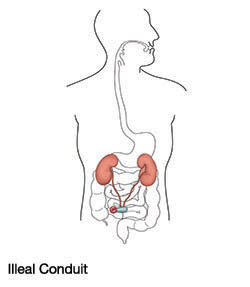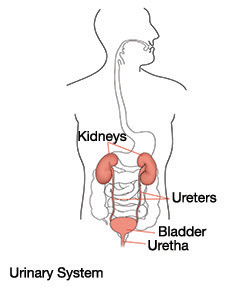Essential Facts About Your Urostomy
It’s helpful to know some key facts about your urinary system and your urostomy before surgery. Get up to speed so you’re well-informed about your procedure.

Explore basic information about your urostomy.
If you are about to have urostomy surgery, you might have some questions. Below is some essential information about your urinary system, as well as some basic facts about your urostomy procedure.
Facts about your urinary system
The human urinary system begins with the kidneys. The kidneys are two bean-shaped organs located just above the waistline toward the back. Urine or liquid waste flows from the kidneys through two narrow tubes, called ureters, and collects in the bladder.
The flow of urine from the kidneys into the bladder is fairly constant. A sphincter muscle allows the bladder to store urine until it is convenient to empty the bladder or urinate. When a person urinates, the sphincter muscle relaxes, allowing urine to flow out of the body through a narrow tube called the urethra.
What’s a urostomy?
A urostomy is a surgically-created opening designed to drain urine. It is also sometimes referred to as an ileal conduit stoma or a urinary diversion. Here are a few facts you should know:
- A urostomy allows urine to flow out of the body after the bladder has been removed or bypassed.
- After your urostomy, urine is no longer eliminated through your urethra. Instead, it is eliminated through the urostomy.
- Because a urostomy does not have a sphincter muscle, you have no voluntary control over when you urinate. Instead, you wear a pouch to collect the urine.
Type of urostomies
Your surgeon may select one of several methods to create the urostomy. The most common method is called an ileal conduit. Here are the basics of this procedure:
- The surgeon removes a short segment of the small intestine (ileum). This will be used as a pipeline – or conduit – for urine to flow out of the body.
- The intestine is then reconnected. It continues to function just as it did before surgery
- The surgeon then closes one end of the conduit and inserts the ureters – the tubes made of muscle fibre that transport urine
- The open end of the conduit goes through the abdominal wall. This new opening in the abdomen is called a stoma.
Another type of urinary diversion is called a colon conduit, which is similar to an ileal conduit with one major difference. To construct a colon conduit, the surgeon uses a short segment of the large intestine instead of the small intestine. The open end of the conduit is passed through the abdominal wall, creating the stoma opening.
Now that you know the basics about how your urinary system works and about urostomy surgery, explore what you need to know about ostomy pouching systems.


Download the full pdf booklet: Understanding Your Urostomy




